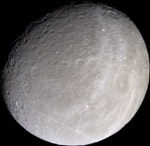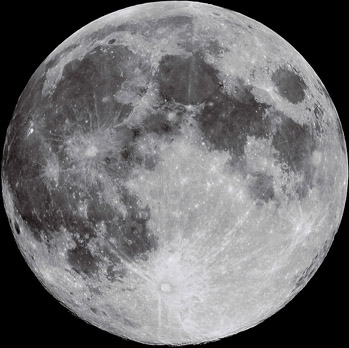Marc Rayman • Dec 01, 2009
Dawn Journal: In the Asteroid Belt, but Far from Asteroids
Dear Dawnticlimaxes,
Dawn continues to make steady progress through the solar system as it maintains a gentle pressure on its orbit around the Sun. It has spent 95% of the time since the last log thrusting with its ion propulsion system, stopping only briefly each week to communicate with the mission control team on distant Earth.
The probe is on an exciting journey to unlock secrets from the dawn of the solar system ensconced in the mysterious worlds Vesta and Ceres. And yet there is one aspect of this expedition that likely is much less exciting than some readers may expect.
Dawn entered the main asteroid belt on November 13. As it ventures ever deeper into this vast collection of material between Mars and Jupiter, it may be tempting to think of the spacecraft constantly dodging asteroids. In some science fiction movies, the huge rocky bodies are so close together that highly skilled piloting is required to avoid catastrophes. Now Dawn is guided by some of the most proficient interplanetary fliers this side of Pluto, but the reality is that accidental impacts are exceedingly unlikely. Space is big, and as plentiful as asteroids are, the distances between them are tremendous.
After crossing the threshold of the belt earlier this month, Dawn will travel 7.7 astronomical units (AU), or nearly 1.2 billion kilometers (almost 720 million miles), to its July 2011 rendezvous with Vesta. Yet in all that time, and across all that distance, the closest the probe will come to a catalogued asteroid is 1.0 million kilometers (greater than 600 thousand miles), or more than 2.5 times the distance between Earth and the Moon. Certainly travelers on Earth would not consider something that far away to be a hazard (especially compared to what many Dawn team members regularly experience on the freeways in Los Angeles), and neither would our intrepid explorer.
To bring this down to a more tractable scale, we can imagine Dawn's journey through the asteroid belt to Vesta as a trip from New York City to Los Angeles, with rocks littered along the way. In this case, along the entire route to a bizarre and forbidding land, the nearest we would come to one of these rocks would be 3.4 kilometers (2.1 miles) -- hardly a close call. At that distance, it would be difficult even to detect the rock, as it would be a mere 1.5 centimeters (less than 5/8 of an inch) in diameter; this corresponds to an asteroid less than 5 kilometers (under 3 miles) across. Even looking out to 20 kilometers (12 miles) during our trek, the largest object we would pass would be just 3.4 centimeters (1.3 inches), representing a 10-kilometer (6-mile) asteroid Dawn will miss by 15 times the distance between Earth and the moon.
Dawn is bound for the giants of the asteroid belt. Vesta's equatorial diameter is about 580 kilometers (360 miles), and Ceres is 975 km (605 miles) across. (Remember that when thinking about three-dimensional worlds such as these, the diameter may fail to illustrate how large they really are.) Together these two behemoths contain more than a third of all the mass in the main asteroid belt. On the scale of our cross-country drive, Vesta would be 2.0 meters (6.5 feet) wide and Ceres would be 3.3 meters (11 feet). Rather than missing them by great distances, we would move to within 0.6 meters (2 feet) of the first target and 2.4 meters (8 feet) of the second.
 Rhea (1538 km) |  Ceres (975 km) | Vesta (580 km) | Enceladus (512 km) |
 The Moon (3476 km) | |||
Although Ceres and Vesta are the giants of the asteroid belt, they are small compared to other solar system bodies, dwarfed by our own Moon. They would be at home among the medium-sized icy moons of the outer solar system, intermediate in size between Rhea (Saturn's second largest moon) and Enceladus. | |||
While astronomers observe members of the asteroid belt as small as about a kilometer (a mile), what about still smaller rocks that are large enough to damage the spacecraft? Because available telescopes generally are not powerful enough to detect such objects from Earth, mathematical models are used to predict their prevalence and thus Dawn's likelihood of encountering them. Although far more abundant than the larger asteroids, there still are too few pebbles distributed over the enormous volume of space through which the ship sails to pose a serious threat.
The spacecraft was designed so that the tiniest particles, which are sufficiently plentiful that some likely will strike it, cannot inflict significant damage. Dawn's largest area is in its solar arrays, and asteroidal dust cracking a few of the 11,480 cells is inconsequential. More sensitive components are covered with protective materials that will cause the high-speed grains to break up and slow down before they reach the vulnerable elements. There is good reason to believe Dawn's travels in the asteroid belt will be safe.
Even as Dawn recedes from the Sun, Earth (moving faster in its tighter solar orbit) is approaching the spacecraft; indeed, the distance has been decreasing for more than a year (and will continue to do so for another two months). On December 5, the craft and the star will be equidistant from the planet. We saw instances of these three members of the solar system family forming a triangle with two equal sides, known as an isosceles triangle, on May 28, 2008 and again on September 18 of this year. In those cases however, the equal sides were those between Dawn and Earth and between Dawn and the Sun. Next month, it will be Earth at the apex of the astronomical triangle, with both the spacecraft and the Sun at a distance of 0.99 AU. The third leg of the triangle, from Dawn to the Sun, will be 1.70 AU.
To illustrate the geometry, let's use one of the new clocks that have just reached the shelves of the Dawn gift shop on your planet. (And note that for any purchase through the end of 2009, we will donate a used xenon ion to the charity of your choice.) With Earth at the center of the clock face, if the Sun were at the 10, Dawn would be the same distance but at the 2. (The clock hands are not important here; the objective is to illustrate the relative lengths and the angles of the isosceles triangle. Ignoring the hands also lets us offer the clock at a very low price!)
Any readers who happen to reside on or be visiting Earth on December 5 may find this arrangement a convenient opportunity to contemplate something of the nature of an interplanetary voyage. Dawn is quite invisible even to the most powerful telescopes, but it will be at the same distance as the most easily detectable extraterrestrial body, the Sun. The spacecraft has been more remote (as have other probes) and will be again later in the mission, but on that day it will be just as far from Earth as the star that rules from the center of the solar system. While the Sun has seemed -- indeed, has been -- unreachably distant for the overwhelming majority of human history, farther even than any horizon travelers could set their sights on, a craft that we set sail upon the cosmic ocean will be exactly that far away.
To add more dimensions to our mental imagery of Dawn's location, we can take advantage of another celestial reference on December 6, before the triangular alignment of the previous day has changed noticeably. At about 8:30 am PST, the spacecraft will appear just over two degrees (or a little more than four times the moon's diameter) north of the Moon. As the Moon's orbit carries it around Earth, it will be less than twice that far from the apparent position of the spacecraft for the six hours before and after that time, so anyone who can see the moon during that interval can get a rough fix on Dawn's location. For readers in North America, the alignment occurs when the Moon is the western sky after dawn (yes!). From the vantage point of the center of the clock, observers may be able to see both the Sun and the approximate location of the spacecraft at the same distance, letting their imaginations take over where their eyes leave off. Out there, in that direction, as far as the Sun, will be Dawn, patiently, reliably, silently continuing its bold voyage of exploration.
Dawn is 1.03 AU (154 million kilometers or 96 million miles) from Earth, or 395 times as far as the moon and 1.05 times as far as the Sun. Radio signals, traveling at the universal limit of the speed of light, take 17 minutes to make the round trip.
Dr. Marc D. Rayman
4:30 pm PST November 27, 2009
The Time is Now.
As a Planetary Defender, you’re part of our mission to decrease the risk of Earth being hit by an asteroid or comet.
Donate Today

 Explore Worlds
Explore Worlds Find Life
Find Life Defend Earth
Defend Earth

